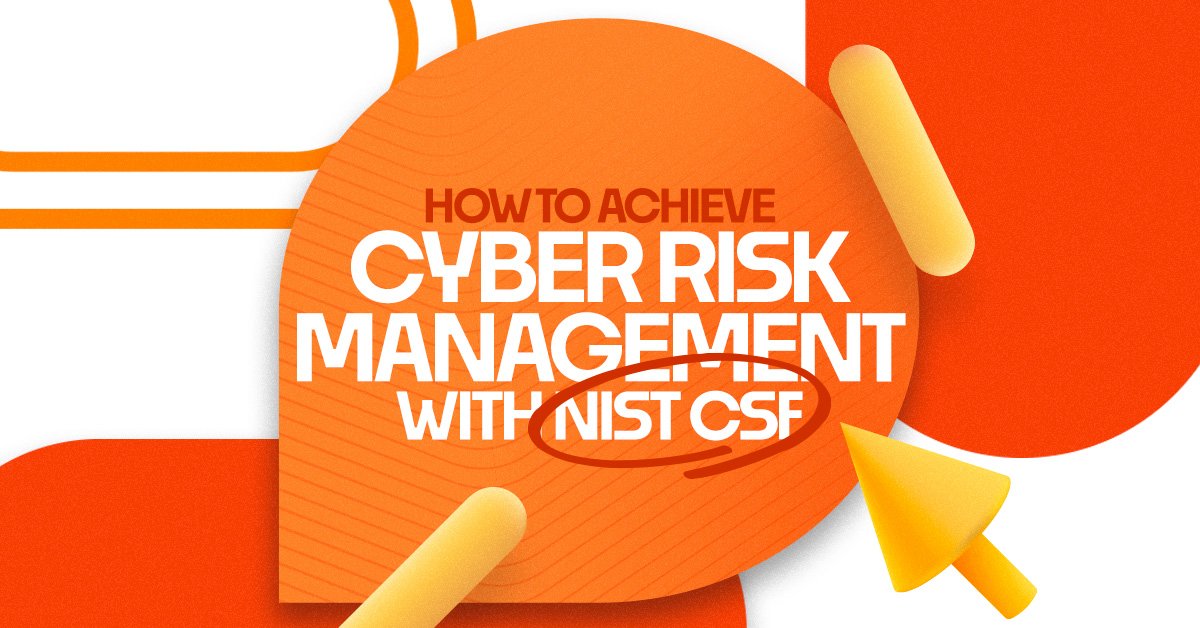Achieving Strategic Cyber Risk Management with NIST CSF: Your Guide to Cyber Resilience
Table of contents
In today’s digital landscape, cyber risks are everywhere. Data breaches, ransomware attacks, and other cyber threats have become regular headlines, and businesses need a robust strategy to protect their assets. Strategic cyber risk management is the foundation of strong cybersecurity, but without a proven framework, your organization might be leaving too much to chance.
That’s where the NIST Cybersecurity Framework (CSF) comes in. It offers a structured, practical approach to cybersecurity that can be customized to meet your organization’s specific needs, helping you identify vulnerabilities, prioritize risks, and bolster your defenses.
In this blog, we’ll discuss how you can leverage the NIST CSF to manage cyber risk strategically, safeguard your business, and build resilience in a constantly changing threat environment.
What Is NIST CSF and Why Does It Matter?
The NIST Cybersecurity Framework was developed by the National Institute of Standards and Technology to help businesses manage and reduce cybersecurity risks. It provides a flexible set of guidelines that organizations of all sizes can use to improve their cybersecurity posture.
So, what makes NIST CSF so effective? At its core, it revolves around five critical functions:
- Identify – Understand your organization’s assets, data, and the risks they face.
- Protect – Implement security measures to safeguard essential systems and data.
- Detect – Put in place mechanisms to detect cyber threats early.
- Respond – Develop an incident response plan to handle cyberattacks swiftly.
- Recover – Establish protocols for recovering quickly from a cyber incident.
Together, these five functions provide a comprehensive approach to cybersecurity that’s both strategic and actionable. By using the NIST CSF, you can ensure that your business is prepared to tackle cyber risks head-on.
The Importance of Strategic Cyber Risk Management
In a world where cyber threats are growing more sophisticated every day, cyber risk management isn’t just an IT concern—it’s a critical business issue. From financial losses and reputational damage to regulatory penalties, the fallout from a data breach can be devastating. This is why it’s crucial to integrate cybersecurity into your broader business strategy.
Strategic cyber risk management helps you prioritize risks, allocate resources efficiently, and strengthen your defenses against potential threats. By doing this, you’re not only protecting your business but also building trust with your customers, stakeholders, and partners.
And here’s the good news: the NIST CSF is designed to make this process easier.
How to Achieve Strategic Cyber Risk Management with NIST CSF
Let’s break down how you can use the NIST CSF to manage cyber risks more strategically:
- Identify Vulnerabilities
Before you can protect your business, you need to know what’s at risk. The Identify function of the NIST CSF helps you map out your critical assets, understand your threat landscape, and identify vulnerabilities that could be exploited by cybercriminals. This step is key to developing a strong foundation for your cybersecurity strategy. Check out our complete guide to identifying vulnerabilities. - Prioritize and Address Risks
Not all cyber risks are created equal. By using the NIST CSF, you can prioritize risks based on their potential impact and likelihood. This allows you to focus your resources on the most critical threats rather than spreading them too thin. For instance, high-impact risks, such as a potential breach of sensitive customer data, should take precedence over lower-impact issues. Learn more about prioritizing cybersecurity risks. - Strengthen Your Defenses
Once you’ve identified and prioritized your risks, it’s time to build your defenses. The Protect function of the NIST CSF guides you in implementing essential security measures, such as firewalls, encryption, and employee training programs. This helps you reduce the likelihood of a successful attack and secure your most valuable assets.Need help implementing these defenses? Our expert cybersecurity services can assist you every step of the way. - Enhance Incident Response and Recovery
Even with the best defenses in place, no business is immune to cyberattacks. That’s why having an effective incident response and recovery plan is critical. The NIST CSF’s Respond and Recover functions help you create a playbook for responding to cyber incidents quickly and effectively, minimizing damage and ensuring business continuity. For tips on developing a strong incident response plan, check out our recent blog post.
The Benefits of NIST CSF for Businesses of All Sizes
One of the greatest advantages of the NIST CSF is its flexibility. Whether you’re a small startup or a large enterprise, the framework can be tailored to meet your specific needs and industry requirements. For example, a healthcare provider might prioritize securing patient data in compliance with HIPAA regulations, while a financial institution may focus on protecting transactions and customer accounts in line with GLBA standards.
By customizing the NIST CSF to your organization’s unique risk environment, you can ensure that your cybersecurity strategy is both effective and compliant with relevant regulations.
Interested in learning how the NIST CSF can be adapted to your industry? Contact us today for a personalized consultation.
Why You Should Partner with Cybersecurity Experts
While the NIST CSF provides an excellent framework, successfully implementing it requires expertise in both cybersecurity and risk management. This is where partnering with a trusted cybersecurity provider can make all the difference. By working with experts, you’ll gain access to:
- Comprehensive risk assessments.
- Tailored cybersecurity strategies.
- Ongoing support and monitoring to keep your defenses strong.
At Business PC Support, we specialize in helping businesses like yours leverage the NIST CSF to achieve strategic cyber risk management. Whether you need help assessing your current cybersecurity posture or want to implement a full-scale cybersecurity program, we’re here to assist you.
Conclusion
In today’s cyber threat landscape, strategic cyber risk management is not optional—it’s essential. By using the NIST CSF, businesses can create a tailored cybersecurity strategy that identifies vulnerabilities, prioritizes risks, and strengthens defenses. This framework provides a clear roadmap to resilience, ensuring your business is prepared for any cyber challenge that comes your way.
Ready to take the next step in protecting your business? Reach out to us today and discover how the NIST CSF can help you navigate the complex world of cybersecurity with confidence.




Comments are closed